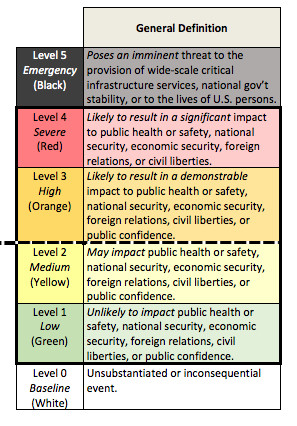I read one of his books several years ago….
Reuters: National attention is focused on Russian eavesdroppers’ possible targeting of U.S. presidential candidates and the Democratic Congressional Campaign Committee. Yet, leaked top-secret National Security Agency documents show that the Obama administration has long been involved in major bugging operations against the election campaigns — and the presidents — of even its closest allies.
The United States is, by far, the world’s most aggressive nation when it comes to cyberspying and cyberwarfare. The National Security Agency has been eavesdropping on foreign cities, politicians, elections and entire countries since it first turned on its receivers in 1952. Just as other countries, including Russia, attempt to do to the United States. What is new is a country leaking the intercepts back to the public of the target nation through a middleperson.
There is a strange irony in this. Russia, if it is actually involved in the hacking of the computers of the Democratic National Committee, could be attempting to influence a U.S. election by leaking to the American public the falsehoods of its leaders. This is a tactic Washington used against the Soviet Union and other countries during the Cold War.
In the 1950s, for example, President Harry S Truman created the Campaign of Truth to reveal to the Russian people the “Big Lies” of their government. Washington had often discovered these lies through eavesdropping and other espionage.
Today, the United States has morphed from a Cold War, and in some cases a hot war, into a cyberwar, with computer coding replacing bullets and bombs. Yet the American public manages to be “shocked, shocked” that a foreign country would attempt to conduct cyberespionage on the United States.
NSA operations have, for example, recently delved into elections in Mexico, targeting its last presidential campaign. According to a top-secret PowerPoint presentation leaked by former NSA contract employee Edward Snowden, the operation involved a “surge effort against one of Mexico’s leading presidential candidates, Enrique Peña Nieto, and nine of his close associates.” Peña won that election and is now Mexico’s president.
The NSA identified Peña’s cellphone and those of his associates using advanced software that can filter out specific phones from the swarm around the candidate. These lines were then targeted. The technology, one NSA analyst noted, “might find a needle in a haystack.” The analyst described it as “a repeatable and efficient” process.
The eavesdroppers also succeeded in intercepting 85,489 text messages, a Der Spiegel article noted.
Another NSA operation, begun in May 2010 and codenamed FLATLIQUID, targeted Pena’s predecessor, President Felipe Calderon. The NSA, the documents revealed, was able “to gain first-ever access to President Felipe Calderon’s public email account.”
At the same time, members of a highly secret joint NSA/CIA organization, called the Special Collection Service, are based in the U.S. embassy in Mexico City and other U.S. embassies around the world. It targets local government communications, as well as foreign embassies nearby. For Mexico, additional eavesdropping, and much of the analysis, is conducted by NSA Texas, a large listening post in San Antonio that focuses on the Caribbean, Central America and South America.
Unlike the Defense Department’s Pentagon, the headquarters of the cyberspies fills an entire secret city. Located in Fort Meade, Maryland, halfway between Washington and Baltimore, Maryland, NSA’s headquarters consists of scores of heavily guarded buildings. The site even boasts its own police force and post office.
And it is about to grow considerably bigger, now that the NSA cyberspies have merged with the cyberwarriors of U.S. Cyber Command, which controls its own Cyber Army, Cyber Navy, Cyber Air Force and Cyber Marine Corps, all armed with state-of-the-art cyberweapons. In charge of it all is a four-star admiral, Michael S. Rogers.
Now under construction inside NSA’s secret city, Cyber Command’s new $3.2- billion headquarters is to include 14 buildings, 11 parking garages and an enormous cyberbrain — a 600,000-square-foot, $896.5-million supercomputer facility that will eat up an enormous amount of power, about 60 megawatts. This is enough electricity to power a city of more than 40,000 homes.
In 2014, for a cover story in Wired and a PBS documentary, I spent three days in Moscow with Snowden, whose last NSA job was as a contract cyberwarrior. I was also granted rare access to his archive of documents. “Cyber Command itself has always been branded in a sort of misleading way from its very inception,” Snowden told me. “It’s an attack agency. … It’s all about computer-network attack and computer-network exploitation at Cyber Command.”
The idea is to turn the Internet from a worldwide web of information into a global battlefield for war. “The next major conflict will start in cyberspace,” says one of the secret NSA documents. One key phrase within Cyber Command documents is “Information Dominance.”
The Cyber Navy, for example, calls itself the Information Dominance Corps. The Cyber Army is providing frontline troops with the option of requesting “cyberfire support” from Cyber Command, in much the same way it requests air and artillery support. And the Cyber Air Force is pledged to “dominate cyberspace” just as “today we dominate air and space.”
Among the tools at their disposal is one called Passionatepolka, designed to “remotely brick network cards.” “Bricking” a computer means destroying it – turning it into a brick.
One such situation took place in war-torn Syria in 2012, according to Snowden, when the NSA attempted to remotely and secretly install an “exploit,” or bug, into the computer system of a major Internet provider. This was expected to provide access to email and other Internet traffic across much of Syria. But something went wrong. Instead, the computers were bricked. It took down the Internet across the country for a period of time.
While Cyber Command executes attacks, the National Security Agency seems more interested in tracking virtually everyone connected to the Internet, according to the documents.
One top-secret operation, code-named TreasureMap, is designed to have a “capability for building a near real-time interactive map of the global Internet. … Any device, anywhere, all the time.” Another operation, codenamed Turbine, involves secretly placing “millions of implants” — malware — in computer systems worldwide for either spying or cyberattacks.
Yet, even as the U.S. government continues building robust eavesdropping and attack systems, it looks like there has been far less focus on security at home. One benefit of the cyber-theft of the Democratic National Committee emails might be that it helps open a public dialogue about the dangerous potential of cyberwarfare. This is long overdue. The possible security problems for the U.S. presidential election in November are already being discussed.
Yet there can never be a useful discussion on the topic if the Obama administration continues to point fingers at other countries without admitting that Washington is engaged heavily in cyberspying and cyberwarfare.
In fact, the United States is the only country ever to launch an actual cyberwar — when the Obama administration used a cyberattack to destroy thousands of centrifuges, used for nuclear enrichment, in Iran. This was an illegal act of war, according to the Defense Department’s own definition.
Given the news reports that many more DNC emails are waiting to be leaked as the presidential election draws closer, there will likely be many more reminders of the need for a public dialogue on cybersecurity and cyberwarfare before November.
(James Bamford is the author of The Shadow Factory: The Ultra-Secret NSA From 9/11 to the Eavesdropping on America. He is a columnist for Foreign Policy magazine.)






